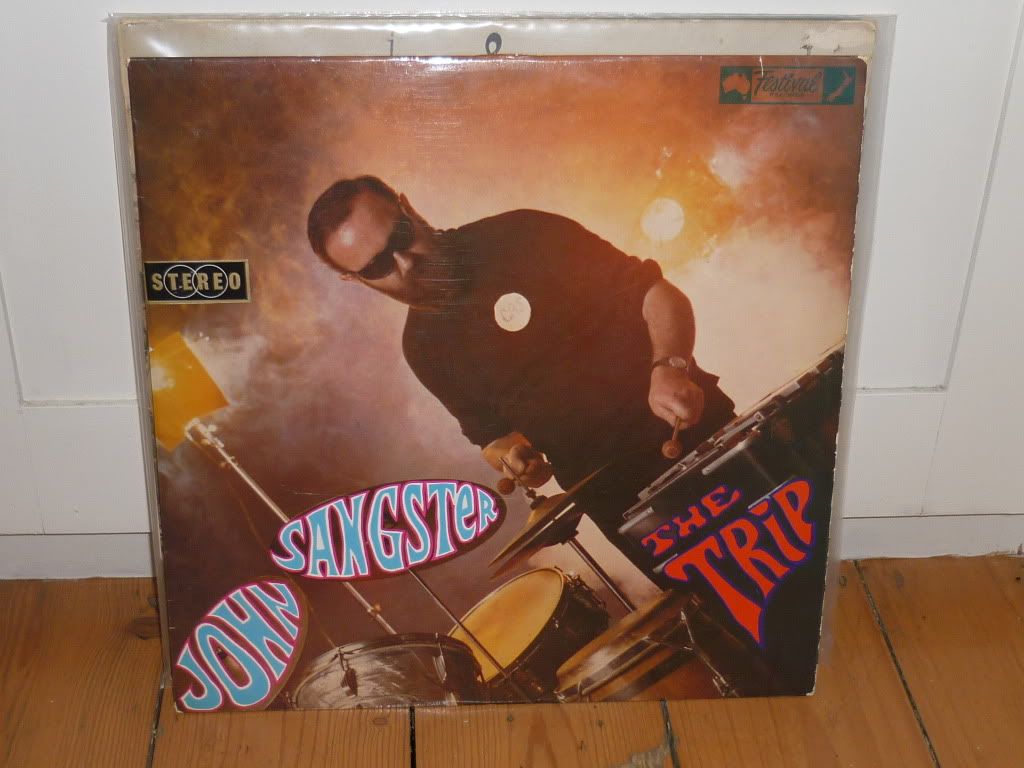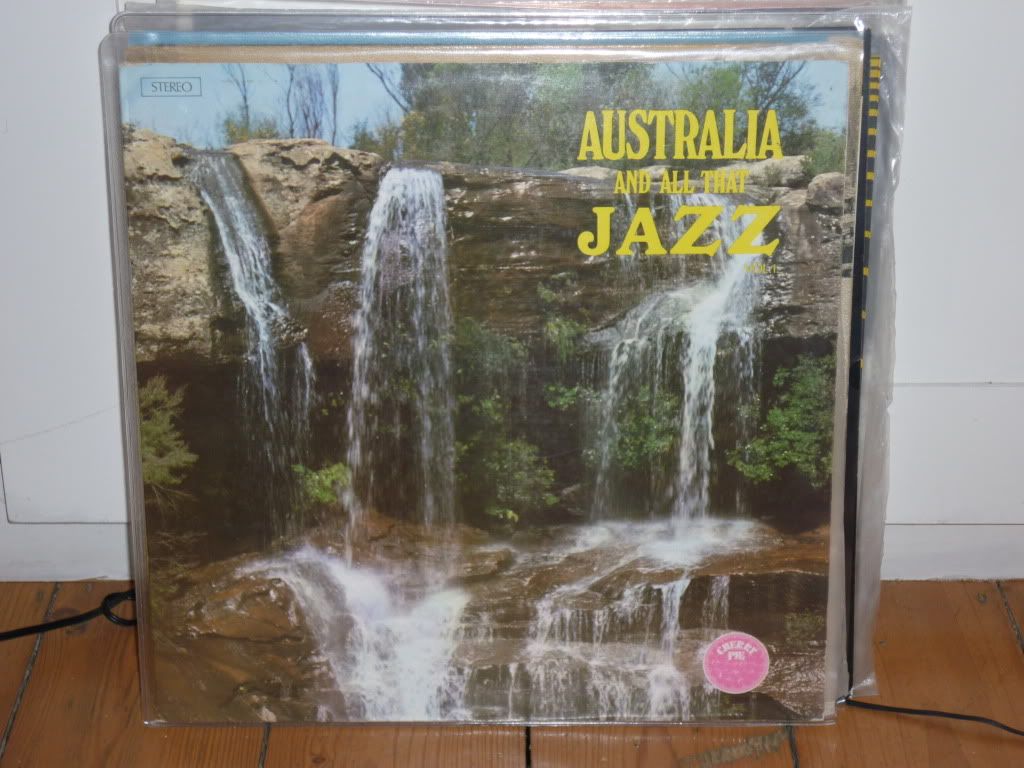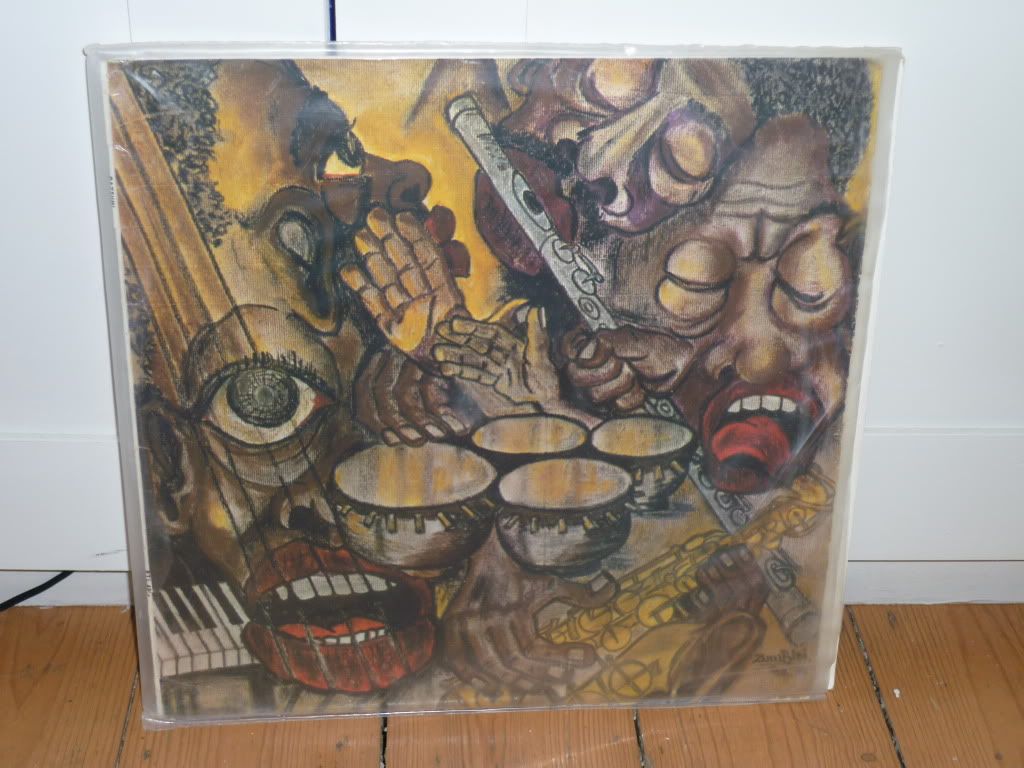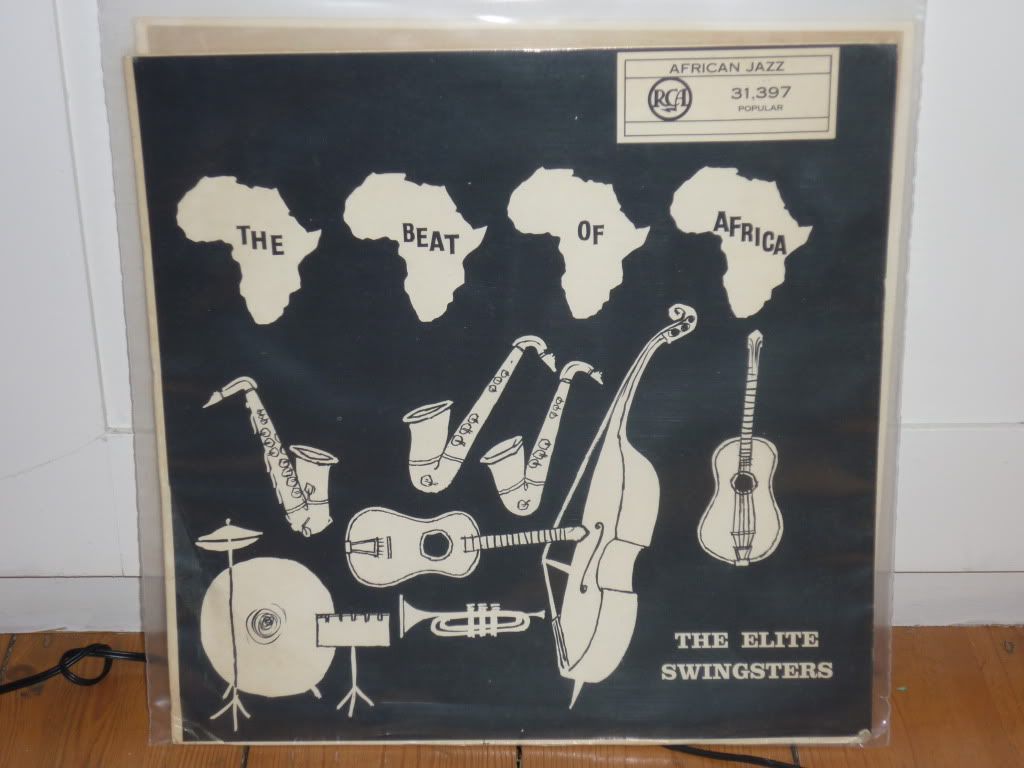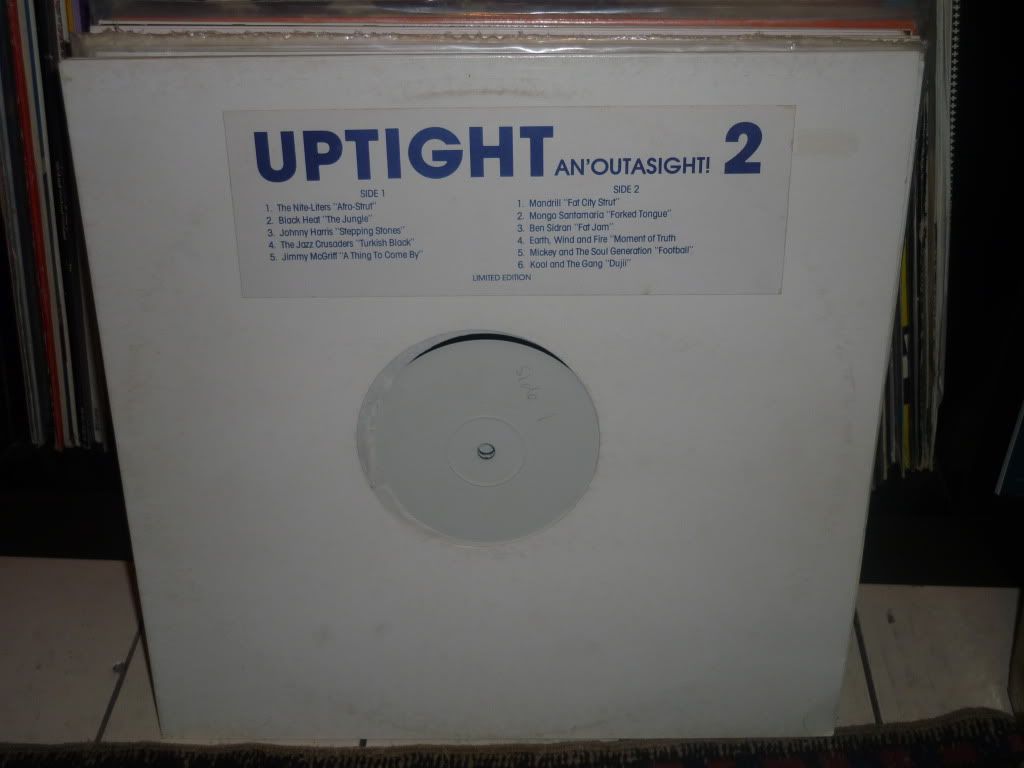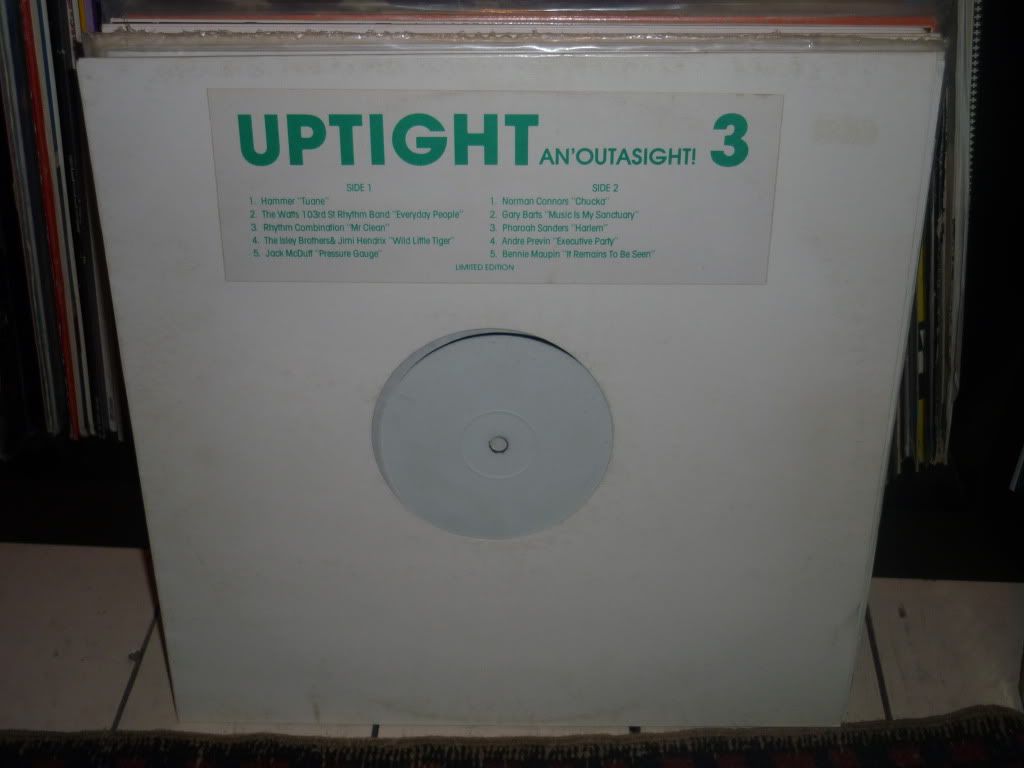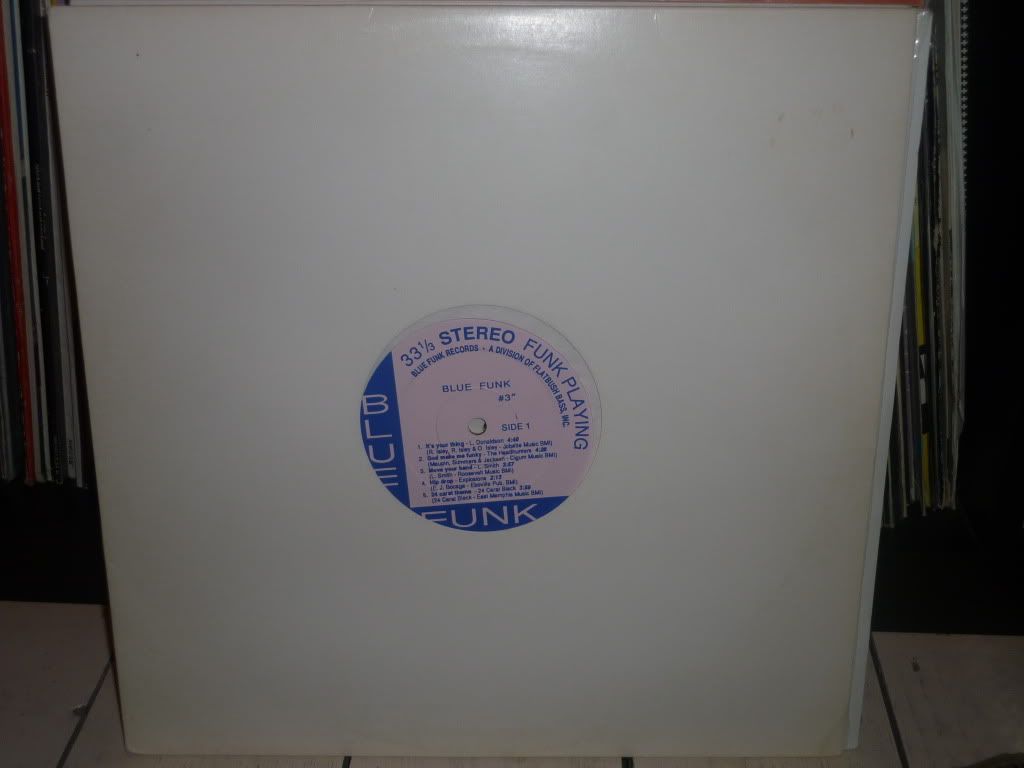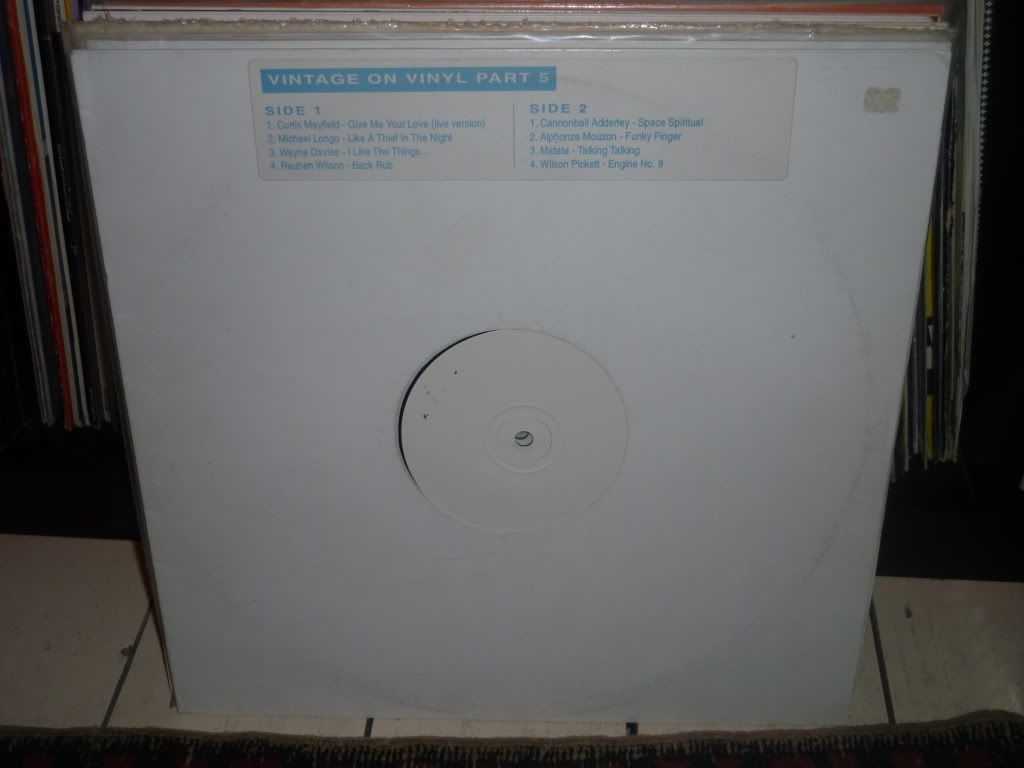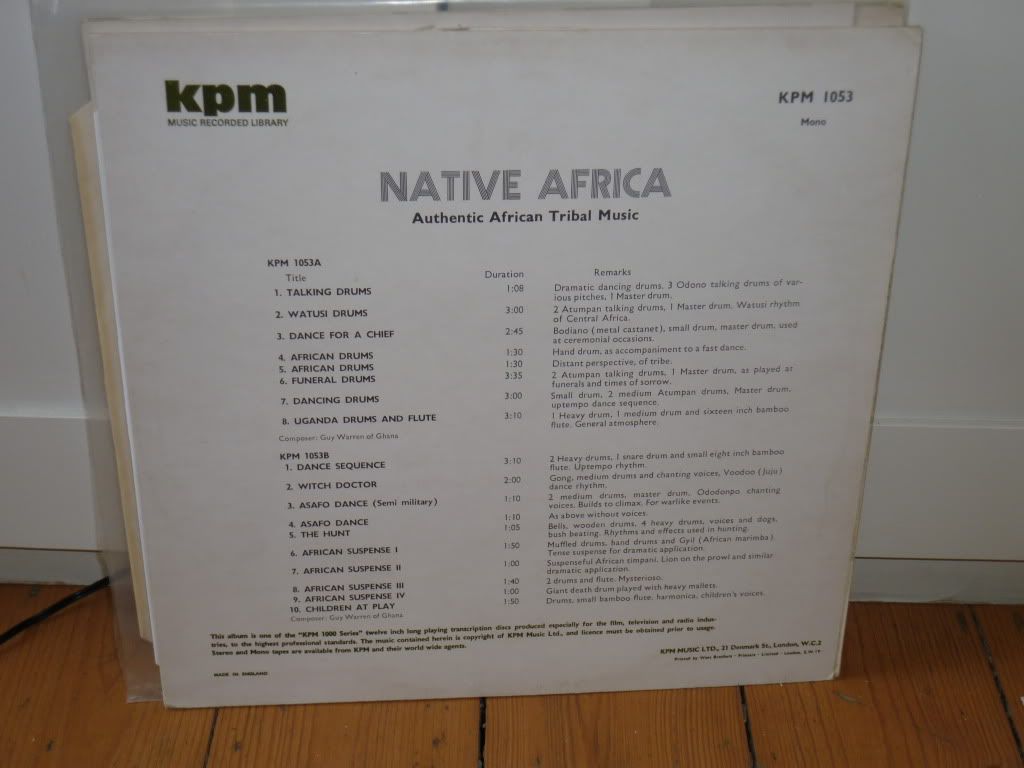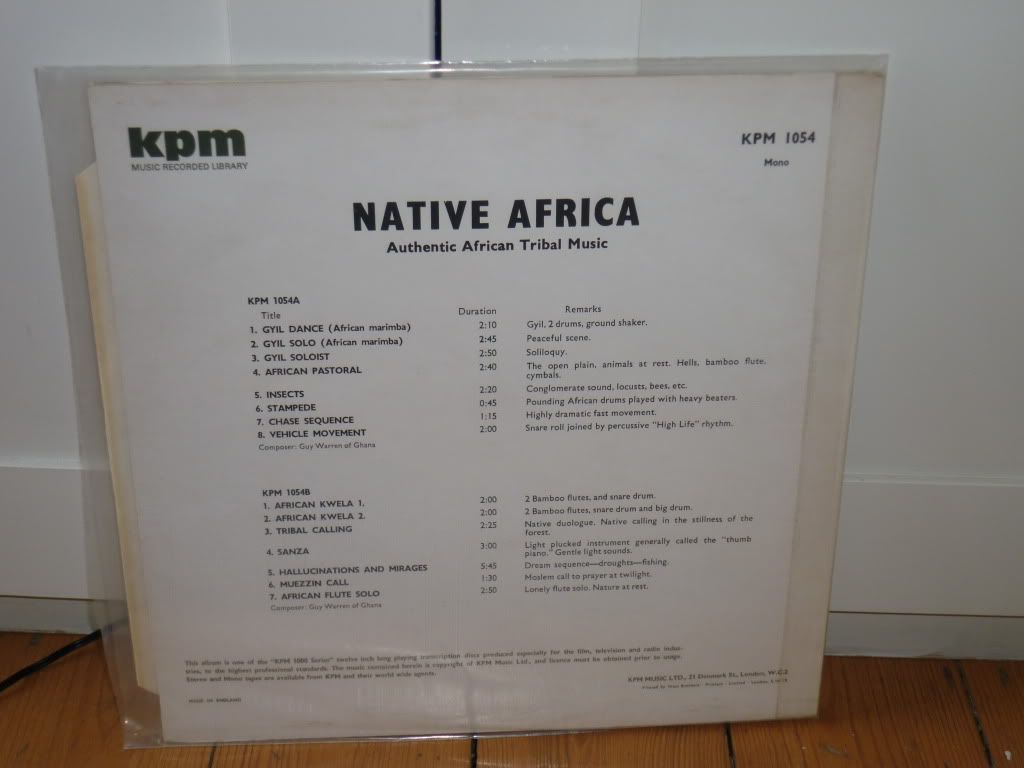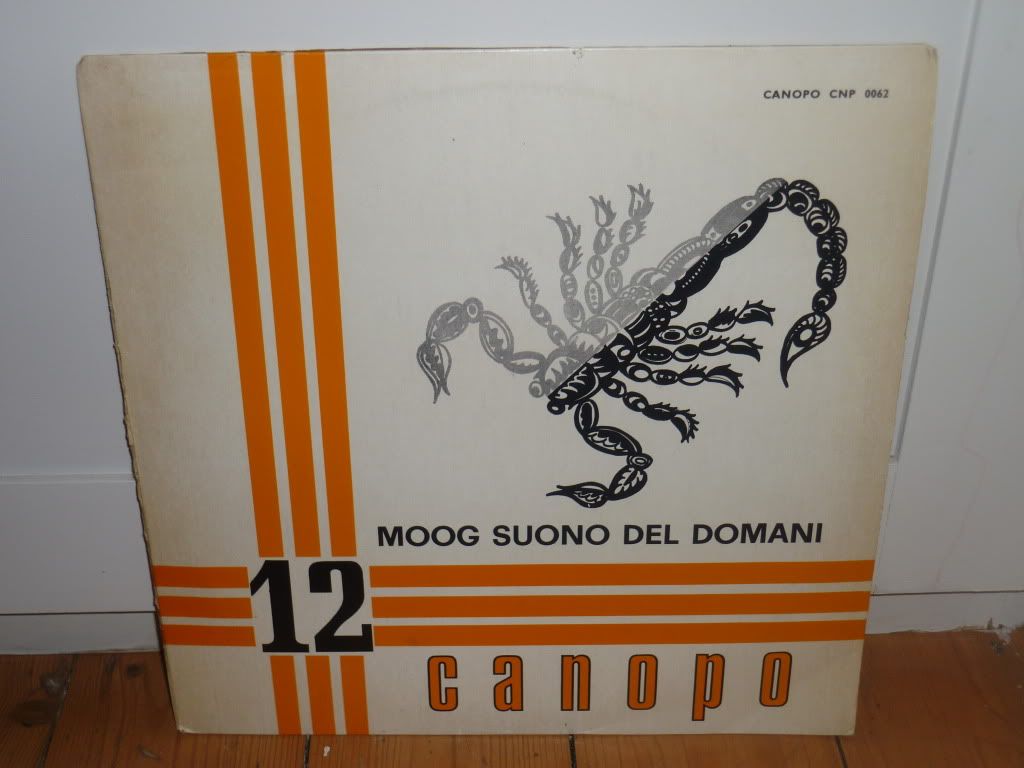It's exploito jazz - from Australia! What's not to like?
"One can write a 1,000 page book about an LP of this kind. The only other alternative is to write hardly anything at all. For obvious reasons we have chose the latter approach."
So begins the anonymous writer of the sleeve notes for this 1967. I shall attempt to emulate him.
Let's start with the cover. John, for it is he, shrouded by smoke, perhaps from a jazz woodbine that someone is smoking out of shot, bearded as he was from about 1958 onwards and wearing a 'cool' pair of shades which make him look slightly like a cuddly Hell's Angel, and a black polo neck jumper which can't quite hide his paunch, is playing the drums. He's sporting a handmade badge that says 'GAS' - he's so far out daddio!
Despite every effort Sangster does not look like a cool, hipster. But I don't think he ever did.
What is this cover trying to say? Is it trying to appeal to youngsters who are into the new type of music? Or is it an obvious joke on fashion and style? You choose!
John Sangster has been described as "possibly the most talented of all the musicians who inhabit the jazz world of Australia".
Starting out as a trad-jazz trumpeter with the Graeme Bell band, Sangster first moved over to vibraphone, then percussion and finally into composition.
He wrote one of my all time favourite jazz records, Australia and All That Jazz.
I was going to write about it but I can't do better than never enough rhodes so you'll have to click on the link and go there to find about this magical record.
The Trip was Sangster's first record under his own name, although he had recorded frequently by this stage with most of the best know Australian jazz musicians, most notably as part of the Don Burrows Sextet on their Jazz Sounds record - another must.
In his autobiography (Seeing the Rafters - a great read if you come across a copy, in which he describes his life as a kind of marathon drinking session) he describes it thus:
"The first album I made under my own steam is (like they say) one I'd prefer to forget. Entitled The Trip it was a multi-percussion thing with me playing everything except the proverbial kitchen sink. It is now, I believe, safely out of print. There was one nice track, a marimba version of 'Spanish Eyes', but then you can't really go far wrong just noodling away at such a pretty little tune."
One can see what he means. In true record company cash-in style the record includes a wide variety of 'hits of the day'. The Beatles get a look in with Michelle, the Rolling Stones with Satisfaction, the Byrds or Bob Dylan with Mr Tambourine Man. That other sixties obsession, James Bond, another much exploited fad in the world of records, is represented by Thunderball and Tom Jones surprisingly gets in again with What's New Pussycat?. However, again in a way that is true of many exploitation records, there are some 'easy' selections thrown in, Comin' Home Baby, Cast Your Fate to the Wind, I'll Wait for You. Finally a few Latin or bossa tracks round everything off, One Note Samba Spanish Eyes and Black Orpheus Medley.
For anyone who might have bought the record in the mistaken belief that they were getting something to listen to while they took drugs (heaven knows why they might have though that!) there is the inclusion of something called 'abstract music' on What's New Pussycat? which opens the second side. In effect what you get is some tape manipulation that sounds like a moog falling down a flight of stairs. So at odds is it with the Latin-style of the song that I struggle not to laugh whenever I play it.
Sangster plays a wide variety of instruments such as vibes, marimba, castanets, trumpet and guiro and is multi-tracked on most songs. He is assisted by famous Oz jazzers George Golla, whose playing on One Note Samba is lovely, and Sven Libaek whose harpsichord on Michelle is more Windmills of Your Mind than fab-four and is, as a result, absolutely fantastic.
Overall, as Sangster clearly felt, it doesn't quite work. There is inventiveness and musicianship in abundance and every song has something to interest and intrigue. However, Sangster's musical ability strains against the choice of material. Its as though, being supremely talented he can't just give a good version of a song, he has to reinvent it from the inside out and in doing so loses something in the process.
Download the album here
"One can write a 1,000 page book about an LP of this kind. The only other alternative is to write hardly anything at all. For obvious reasons we have chose the latter approach."
So begins the anonymous writer of the sleeve notes for this 1967. I shall attempt to emulate him.
Let's start with the cover. John, for it is he, shrouded by smoke, perhaps from a jazz woodbine that someone is smoking out of shot, bearded as he was from about 1958 onwards and wearing a 'cool' pair of shades which make him look slightly like a cuddly Hell's Angel, and a black polo neck jumper which can't quite hide his paunch, is playing the drums. He's sporting a handmade badge that says 'GAS' - he's so far out daddio!
Despite every effort Sangster does not look like a cool, hipster. But I don't think he ever did.
What is this cover trying to say? Is it trying to appeal to youngsters who are into the new type of music? Or is it an obvious joke on fashion and style? You choose!
John Sangster has been described as "possibly the most talented of all the musicians who inhabit the jazz world of Australia".
Starting out as a trad-jazz trumpeter with the Graeme Bell band, Sangster first moved over to vibraphone, then percussion and finally into composition.
He wrote one of my all time favourite jazz records, Australia and All That Jazz.
I was going to write about it but I can't do better than never enough rhodes so you'll have to click on the link and go there to find about this magical record.
The Trip was Sangster's first record under his own name, although he had recorded frequently by this stage with most of the best know Australian jazz musicians, most notably as part of the Don Burrows Sextet on their Jazz Sounds record - another must.
In his autobiography (Seeing the Rafters - a great read if you come across a copy, in which he describes his life as a kind of marathon drinking session) he describes it thus:
"The first album I made under my own steam is (like they say) one I'd prefer to forget. Entitled The Trip it was a multi-percussion thing with me playing everything except the proverbial kitchen sink. It is now, I believe, safely out of print. There was one nice track, a marimba version of 'Spanish Eyes', but then you can't really go far wrong just noodling away at such a pretty little tune."
One can see what he means. In true record company cash-in style the record includes a wide variety of 'hits of the day'. The Beatles get a look in with Michelle, the Rolling Stones with Satisfaction, the Byrds or Bob Dylan with Mr Tambourine Man. That other sixties obsession, James Bond, another much exploited fad in the world of records, is represented by Thunderball and Tom Jones surprisingly gets in again with What's New Pussycat?. However, again in a way that is true of many exploitation records, there are some 'easy' selections thrown in, Comin' Home Baby, Cast Your Fate to the Wind, I'll Wait for You. Finally a few Latin or bossa tracks round everything off, One Note Samba Spanish Eyes and Black Orpheus Medley.
For anyone who might have bought the record in the mistaken belief that they were getting something to listen to while they took drugs (heaven knows why they might have though that!) there is the inclusion of something called 'abstract music' on What's New Pussycat? which opens the second side. In effect what you get is some tape manipulation that sounds like a moog falling down a flight of stairs. So at odds is it with the Latin-style of the song that I struggle not to laugh whenever I play it.
Sangster plays a wide variety of instruments such as vibes, marimba, castanets, trumpet and guiro and is multi-tracked on most songs. He is assisted by famous Oz jazzers George Golla, whose playing on One Note Samba is lovely, and Sven Libaek whose harpsichord on Michelle is more Windmills of Your Mind than fab-four and is, as a result, absolutely fantastic.
Overall, as Sangster clearly felt, it doesn't quite work. There is inventiveness and musicianship in abundance and every song has something to interest and intrigue. However, Sangster's musical ability strains against the choice of material. Its as though, being supremely talented he can't just give a good version of a song, he has to reinvent it from the inside out and in doing so loses something in the process.
Download the album here
